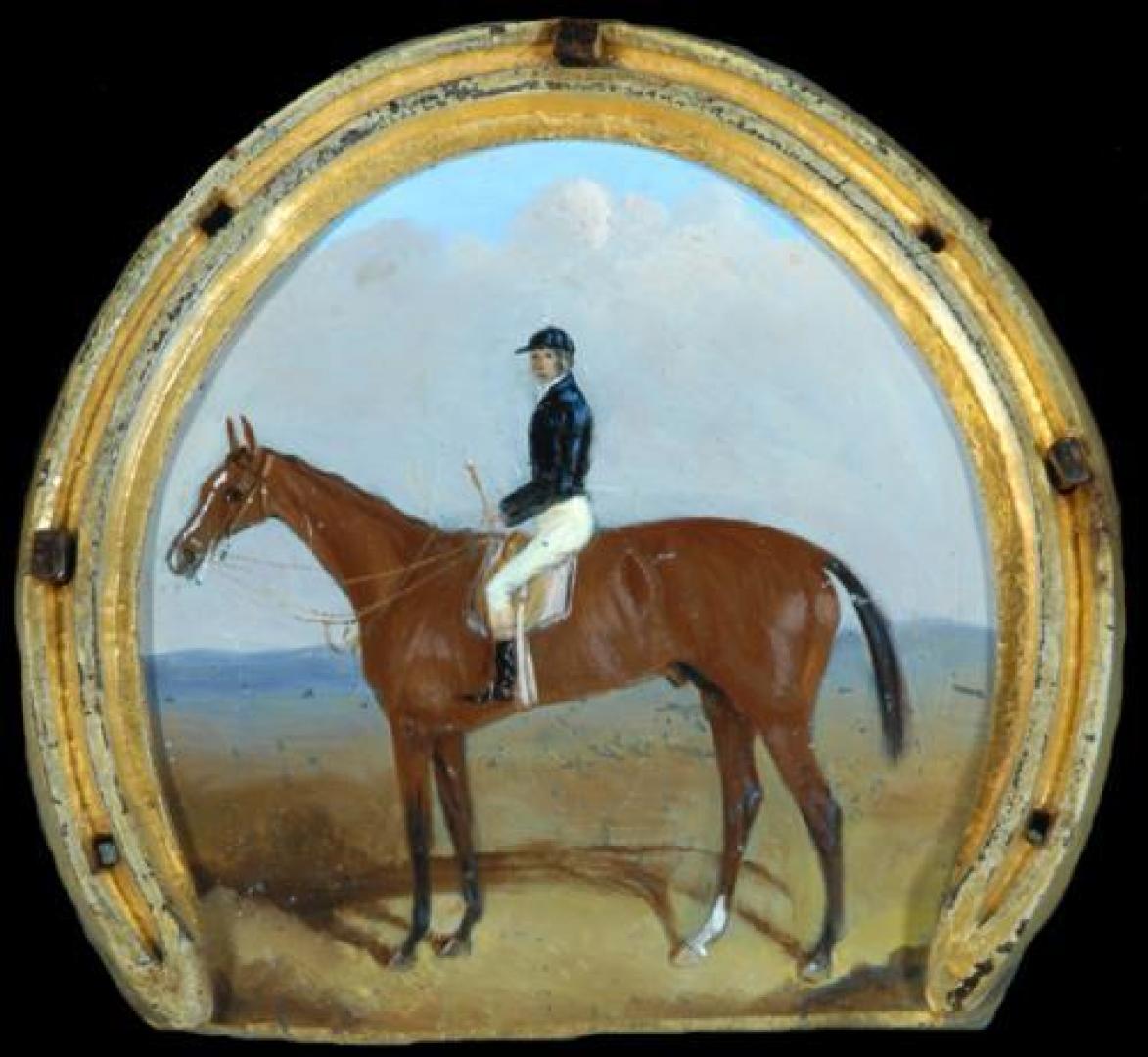In an occasional column, Dorothy Blundell takes a sideways personal look at what goes on behind the scenes at The Bowes Museum where she is a volunteer
TWO of the smallest paintings in the museum reveal one of John Bowes’ biggest passions – horseracing.
When he wasn’t collecting art, sitting in parliament as MP for South Durham between 1832 and 1847, or taking care of business on both sides of the channel, Bowes enjoyed going to the races. More than that, he was a notable breeder and owner of racehorses.
The tenth Earl of Strathmore, father of John Bowes, revived the stud at Streatlam (started in 1792).
John inherited his father’s (and grandfather’s) love of horses, and when he turned 21 in 1832 and inherited the stud, he named a home-bred foal Mundig (German for “of age” ). Three years later, Mundig was the first North-East trained horse to win the Derby. Amazingly, Bowes had three more Derby winners – Cotherstone (also winner of the Two Thousand Guineas) in 1843, Daniel O’Rourke in 1852, and his greatest success, West Australian in 1853 which became the first of only 15 horses to win racing’s Triple Crown (Two Thousand Guineas, Derby and St Leger).
Bowes’ love of the turf was lifelong. As a young man he was a regular at race meetings at Doncaster, York, Newmarket and Goodwood and he never missed a Derby. His busiest year was 1839 when 11 horses were entered for 40 races across England with a resulting 11 firsts, eight seconds and five thirds.
By 1846, those figures had fallen to seven horses in 26 races and only three firsts.
Then, in 1849 he contemplated giving it up – he was spending increasing amounts of time in Paris, and had fewer horses in training each successive year.
It’s a good job he didn’t go through with it, as Daniel O’Rourke was foaled in 1849 and West Australian the year after – the latter winning £40,000 (about £5million today) in the Derby.
Though Bowes could not be called sentimental, he kept their shoes (known as racing plates) as mementos of their triumphs and, for exceptional horses, these shoes were gilded, mounted on tin and a portrait of the horse painted within the curve of the shoe.
He had affection for his horses – he gave them a peaceful retirement at Streatlam or placed them in good homes rather than part with them for a few pounds and risk them being ill treated. Ailing or incurably injured horses were shot and buried in the estate grounds instead of the carcass being fed to hounds. The West (as the horse was known), was eventually bought for 3,000 guineas by the Duc de Morny, half-brother to Napoleon III.
When the Duc died in 1862, the horse went to the French National Stud. He was a decent sire, although characterised at the time as disappointing. But it is his achievements on the track that will ensure his name is remembered.
A memorial to him was built in the private grounds of Streatlam Park Estates in the 1950s by owner Major Philip Pease. It still stands today.
Fifty years after Mundig’s famous win and 52 years after his first runner, Maid of Lune at York, Bowes’ black and gold colours were carried to victory for the last time on Fiddler’s Wife at Scarborough in August 1885. That year he had four youngsters in training – one, The Devil to Pay, was short odds for the 1886 Derby, but when Bowes died in October all engagements for the horses became void and they were sold 20 days later.
The Derby hopeful fetched 4,100 guineas, but, alas, proved impossible to train.
A century later, the museum held no paintings of his horses – a situation since rectified with the acquisition of two racing plate paintings of Daniel O’Rourke and West Australian, two larger images of Cotherstone and two of Mundig.


